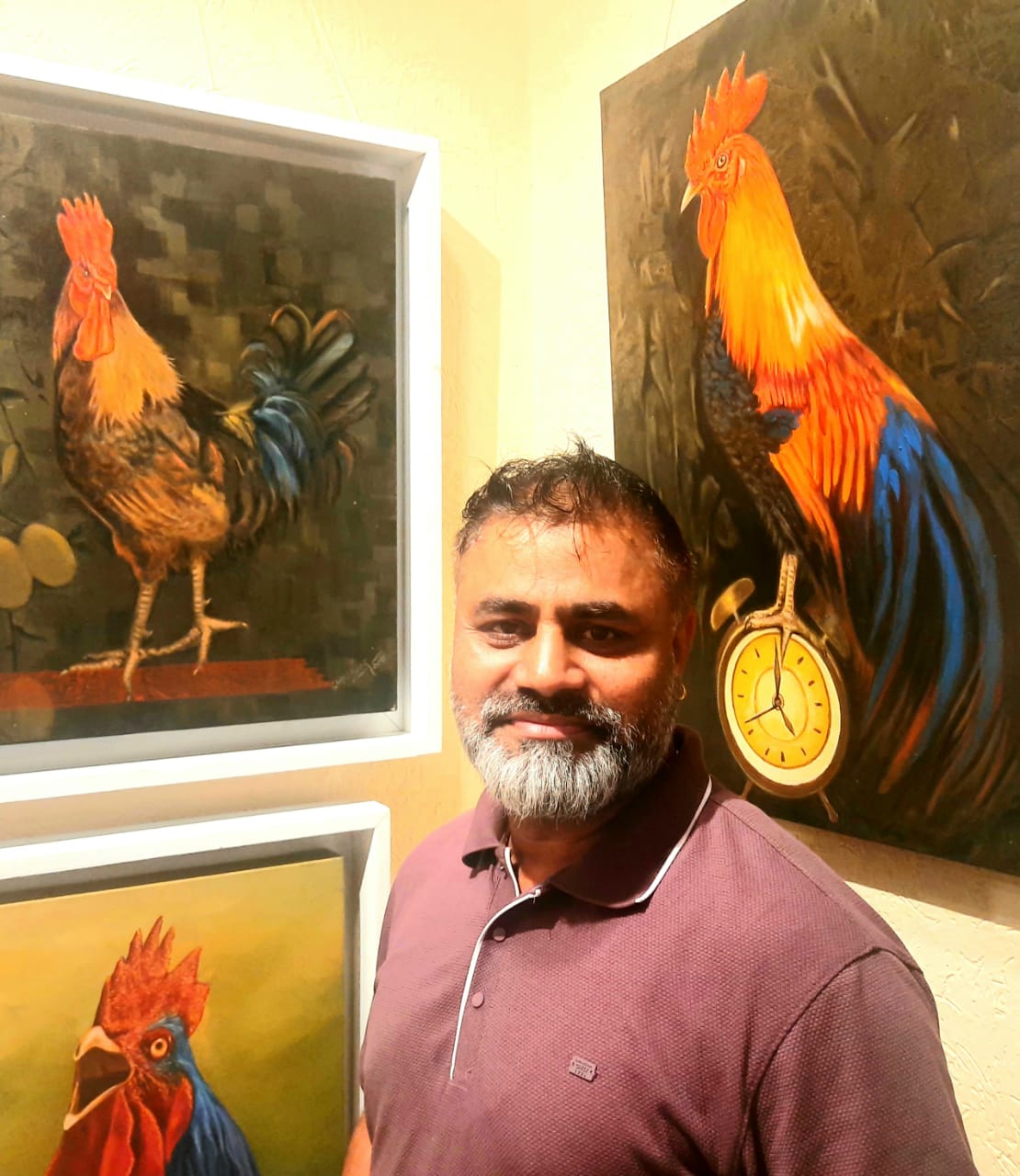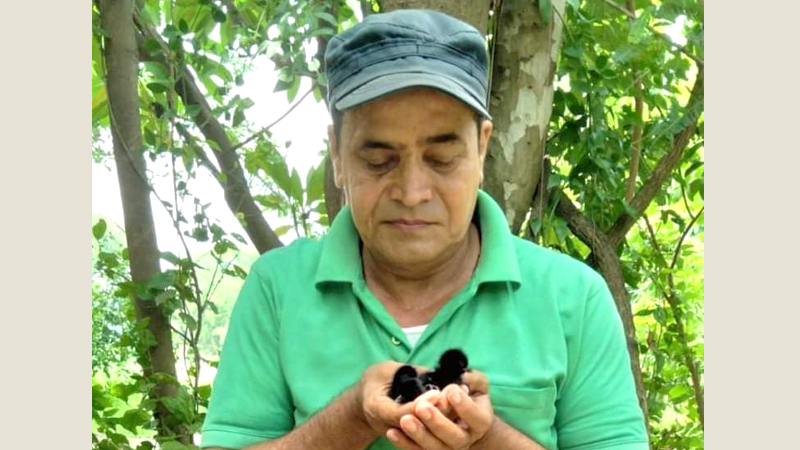Dr. Anupam Krishna Dixit serves as the Principal Scientist at the ICAR-Central Institute for Research on Goats (CIRG). He earned his MSc in Livestock Economics from ICAR-Indian Veterinary Research Institute (IVRI) and a PhD from the Institute for Agricultural Sciences (IASc) at Banaras Hindu University (BHU). Dr. Dixit’s extensive research portfolio spans various areas, including Livestock Planning and Development, Environmental Impact on Livestock, Agricultural Marketing, Agribusiness Management, and Impact Assessment.
With over 15 years of research experience, Dr. Dixit has authored more than 50 research articles in peer-reviewed national and international journals, along with four books and a discussion paper on International Development Strategies. Recognized for his contributions, he has received the Dr. RT Doshi Foundation Award from the Agricultural Economics Research Association. He also got the Best Extension Professional Award from the Society of Extension Education.
Dr. Dixit’s international collaborations include projects like the Environment and Poverty in the Urban Informal Sector with FASID in Tokyo. Moreover, he worked on the Goat Value Chain project with the International Livestock Research Institute (ILRI) in Nairobi, Kenya. Currently, he is engaged in the Department of Science and Technology (DST) project focused on goat-based technological and livelihood improvement in Uttarakhand state, along with overseeing a NABARD-funded project.
His diverse professional journey includes collaborations with the Centre for Management in Agriculture (CMA) at IIM, Ahmedabad, CESR – NCAP in New Delhi, and the Sectoral Analysis and Studies Group (SAS) at the National Dairy Development Board (NDDB) in Anand, Gujarat.
In an exclusive interaction with The Interview World, Dr. Anupam Krishna Dixit elaborates on how prioritizing livestock farming, particularly goats, can significantly enhance the livelihoods of marginalized farmers. Here are the key excerpts from his interview.
Q: What’s the role of the Central Institute for Research on Goats?
A: The Central Institute for Research on Goats (CIRG) stands as Asia’s sole institute devoted to goat research. It plays a crucial role in investigating various facets of goat production and utilization. The institute’s focus encompasses research on goat genetics, breeding, as well as the development and utilization of feed. Additionally, CIRG delves into nutrition, physiology, reproduction, management, diagnosis, and the prevention of diseases related to goats. It actively engages in transferring improved technologies and exploring advancements in milk and meat product technology. Overall, CIRG serves as a comprehensive hub for advancing knowledge and innovations in the field of goat farming.
Q: What are the constraints in goat farming?
A: Let’s begin by taking a broad look at India’s livestock economy before delving into the specifics. Livestock farming constitutes 9% of India’s overall economy. Specifically, the goat population in India totals 15 crore, with 80% of them being overseen by marginalized, landless small farmers.
Notably, women play a dominant role in goat farming in India. This is primarily due to the ease of handling goats and the simplicity involved in their rearing. However, despite the significant presence of goat farming within the weaker sections of society, there is a lack of a proper ecosystem to address the associated challenges.
Unfortunately, there is no cooperative society dedicated to goat farming, and existing insurance facilities are inadequate to help farmers mitigate risks. Compounding the issue, the loans extended by banks and financial institutes to goat farmers fall short of meeting their actual needs. This financial gap poses a considerable hurdle to sustainable goat farming practices.
Furthermore, the veterinary services catering to goats need substantial strengthening. This is an essential aspect that requires attention to ensure the well-being of the goat population and, consequently, the success of goat farming in India. In summary, addressing these multifaceted challenges is crucial for fostering a more robust and sustainable goat farming sector in the country.
Q: What are the tangible benefits of goat farming?
A: The goat, a versatile animal, serves multiple purposes by providing meat, milk, hide, fiber, and manure. In hilly regions, goats are even utilized for light load hauling. Despite their usefulness, goats have minimal housing and management requirements, making them a practical choice for farmers.
In these areas, goats happily share living spaces with their owners or other livestock, eliminating the need for separate housing. This adaptability extends the potential for goat farming to various demographics, including landless agricultural laborers, women, and children. Their ability to thrive on a diverse diet comprising leaves, shrubs, bushes, and kitchen waste adds to their appeal.
Goat farming proves to be a profitable venture, seamlessly fitting into mixed farming practices. The cost-effectiveness of raising goats, coupled with their easy availability and friendly disposition, make them an attractive option. To illustrate, the cost of maintaining 10 goats equals that of a single buffalo, significantly reducing the risks associated with goat farming.
Furthermore, farmers can capitalize on the higher market prices for goat meat, creating a lucrative income stream. The medicinal properties of goat milk, particularly its elevated buffering qualities, make it valuable for individuals dealing with peptic ulcers, liver dysfunction, jaundice, biliary disorders, and various digestive problems. This heightened value is reflected in the market price, with goat milk commanding Rs. 50 per 250 ml.
Goat farming presents numerous benefits, ranging from economic viability to health-related advantages. Undoubtedly, it is a promising venture for farmers to explore.
Q: What’s the commercialization scenario of goat farming in India?
A: The popularity of commercial goat farming is steadily increasing, drawing the attention of many young individuals who recognize its economic advantages. To boost income, ICAR-CIRG is actively providing technical knowledge and support to farmers, entrepreneurs, and various stakeholders. In India, commercial farms are focusing on rearing diverse breeds such as Barbari, Jamunapari, Sirohi, Jakhrana, Beetal, and Black Bengal for both milk and meat production. Notably, Changthangi and Chegu breeds stand out for their exceptional fiber quality.
To propel the commercialization of goat farming in India, a holistic ecosystem is essential. This should encompass elements such as comprehensive financing options, insurance coverage, cooperative initiatives, healthcare services, and a well-structured marketplace. By establishing these components, we can facilitate and expedite the growth of goat farming as a thriving commercial venture in the country.










1 Comment
Good day! This is my first visit to your blog! We are a team of volunteers and starting a new project in a community in the same niche. Your blog provided us useful information to work on. You have done a marvellous job!
Comments are closed.